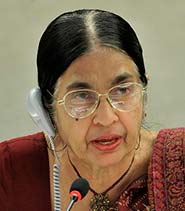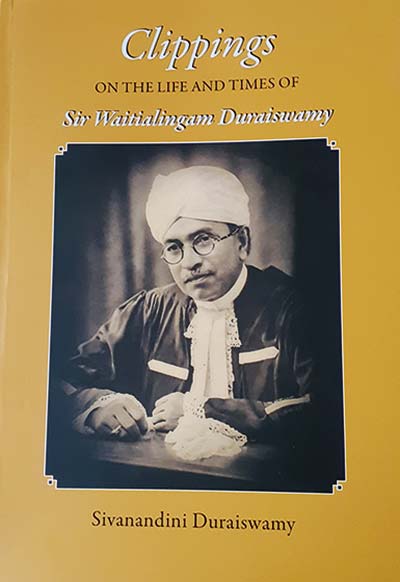Features
Past, present and future
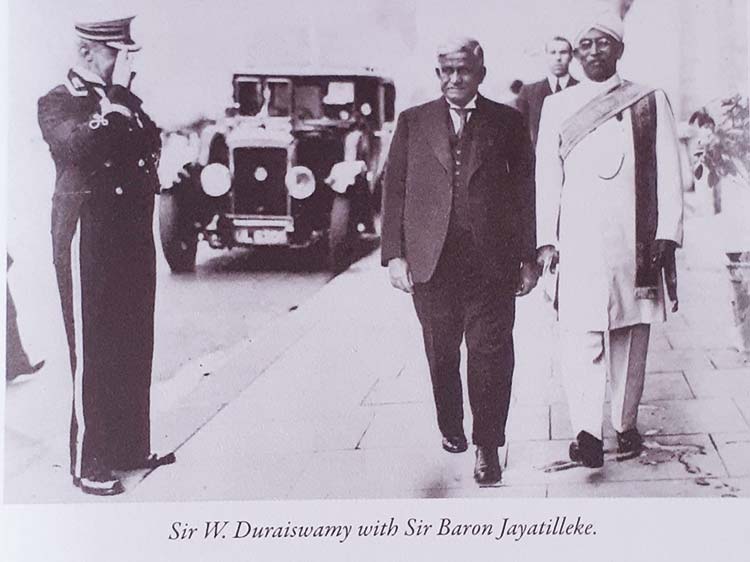
Addresss on the twin launch of books on father and son
The first edition of the book “My Diplomat,”authored by Ms Sivanandini Duraiswamy, as a biography of her late husband Yogendra Duraiswamy was published in 2000.This was at the beginning of new Millennium, a year after his passing in 1999. I thank Ms Duraisawmy and her son Naresha for inviting me to speak to you this evening, at the launch of the second edition of this book. The family and I have had some connections.
When Mr Duraiswamy’s father and Dr Naresha’s grandfather Sir Waitialingam Duraiswamy was a distinguished Speaker of the State Council, my maternal grandfather was a member of the Board of Ministers, as Minister of Health. Both became “Knights” of some obscure colonial “Order”, an honour conferred by Queen Victoria, British Empress of our island, then Ceylon.
Sir Waitialingam wore his traditional dress, as did my grandfather. Sir Waitialingam acquired the name of Porter from his colonial sponsor. My grandfather kept the first generation Kandyan name of Tikiri Banda, and named his son the third generation TB, Theodore Braybrooke ! So we have had colonial connections that we have happily shed in succeeding generations. as the publications launched this evening, clearly demonstrates for the Duraiswamys.
I had mixed feelings when I read this book. It was inspiring to read a testimony to a life well lived, with equanimity, integrity and courage in difficult times in our country. Mr. Yogendra Duraiswamy lived in the best of times at the dawn of independence, and the worst of times, of armed conflict. Mr. Duraiswamy, like those of his generation was a son of independent Sri Lanka at the dawn of freedom from centuries of colonial rule. There were anticipations and promises of a clear path to national progress and development.
Yet when Mr Duraiswamy passed away just at the end of that century, he had lived through a fratricidal and violent armed conflict, that impacted especially the North and East of the country, with which he had a deep sense of roots both in his personal and professional life. We meet this evening 25 years after Mr.Duraiswamy’s passing, 15 years after the end of the armed conflict in the North and East. We concluded an armed conflict of 30 years. Is not peace and development after conflict, still an unfulfilled dream?
Readers of this book will I think find that its record of past times, experiences and events, will provide some relevant insights and wisdom. The book comes as an expanded second edition, with documents that provide an opportunity for thought and reflection in Election Year 2024 for resolution to our National Question of power sharing. The book also provides insights on the leadership needed for accountable governance and public administration, based on a social contract that is not misunderstood by the rulers and their officials.
I hope the Book will receive the publicity that it deserves, and will be read by concerned citizens, despite the current focus on google searches WhatsApp messages and the internet, as a mode of communicating thoughts and ideas. The book comes in two parts. The first focuses on memories and events linked to Mr. Duraiswamy’s personal and professional life. This is usual in biographies.
I would like to share some thoughts on the first part which, is closely linked to the second part, that deals with substantive issues of public concern. This part also includes what I would describe as archival material of value. I would like to describe the former as the “He and Me” chapters of Ms. Duraiswamy’s book,”My Diplomat”. Crafted with an easy style and clarity, by someone who has received a national award for creative writing, this really is what is often described now as a “good read”.
Feminists tend to dismiss what is sometimes called “pativatha”or adulation of a husband. I think readers will appreciate a human story that speaks to a close relationship of love, and companionship, after a traditional arranged marriage, that was abundantly fulfilling and enriching for both partners. Indeed the idea of recording Mr Duraiswamy’s experiences in his “Jaffna Story” in a book, was a common project that interested both, and encouraged a shared approach to carrying this forward.
That relationship also extended to a strong bond of love and affection with their son Naresha. On one occasion when he actually sets their apartment on fire by lighting a match left by a careless maid, he is showered with affection. Modern mothers now understand that connectivity to the unborn in pregnancy is vital. Mrs Duraiswamy not only had stimulating conversations with her beloved spouse and companion. She began her conversation with her son before he was born and forged a bond that has helped her cope with the desolation of grief and loss and come through.
They have been fortunate to experience what is referred to as “the matchless blessing of a happy home and family”. These personal reflections to me are important, capturing a world of bonding and close familial relationships enriched by traditions of human communication and connectivity that seem to be disappearing in a brave new world of Internet connectivity. I recall Nelson Mandela once saying that all his core values were formed with his connectivity to his elders in the Transkei region of South Africa. Intergenerational connectivity is celebrated in this book.
Mrs. Duraiswamy’s introduction to life in Jaffna in colonial times also makes interesting reading, capturing as it does the impact of the American missionaries on education in the colonial period. The connection to conversion to Christianity in some ways contrasts with the British missionaries in other parts of the country, where secular school Principals in mission schools focused on giving a secular education to both Christians and Non Christians in an ethos of Christian values.
The impact of the religious revival linked to nationalism is reflected in the establishment of Hindu Secondary schools in Jaffna, rather like the establishment of schools like Visakha in Colombo and Mahamaya Girls School in Kandy. This trend was to have significant impact on educational policy in later years. Mrs Duraiswamys writing on their diplomatic postings also captures times past, in countries of the Middle East like Iraq Iran and Palestine – trapped today in violence generated by power politics.
Experiences in the “Forbidden City” of the times, Beijing, speak to the austerity and rigidity of an environment that has changed dramatically.
The second part of the book , beginning with the Chapter “Return to Jaffna”, has I think archival value in two important areas of continuing concern for our country. These chapters record various facets of Mr. Yogenndra Duraiswamy’s life, his experience of public office and governance, and what we would call today “civil society activism”. We now live in a country that has seen the collapse of public institutions, and adversarial or confrontational politics that has prevented us from winning the peace after 30 years of armed conflict.
Mr Duraiswamys experiences and his writings are carefully documented, with a sense of history, rather than personal emotions and bias, that can surface in writing on the national question or governance. Mr Duraiswamy articulated his vision of solutions to the National Question in terms of maximum devolution of power to the Tamil regions, and maximum and shared resource allocation for economic growth and development. He saw this as a necessary and possible path to peaceful coexistence of the majority and minority communities in our country. He was articulate in his rejection of separatism.
He celebrated his identity as a member of the Tamil community in his life and work but respected the diversity of Peoples and the shared religious and cultural connectivity of the Sinhala and Tamil communities. These ideas are reflected in his contribution in public life, and the speeches and writings published in this book. Articulating this position required courage at a time when a completely different and dominant political discourse prevailed in his community. Criticism and his rejection when he tried to enter active politics did not change his views in this regard. He was a role model of integrity and personal commitment to ideas and values he believed in.
Compare this with today’s politicians in public life. and public office. Mr Duraiswamy was a person who Tagore describes as “men and women whom the lust for office cannot buy.” Mr Duraiswamy perhaps like many others of his generation was active in Civil Society after retirement. A central area of his engagement was working towards peaceful coexistence in a plural society through interfaith religious and cultural connectivity.
He gave leadership in the Hindu Council and facilitated expression of a collective opinion on issues of public concern, not just for that community, but for Sri Lankans. The attack on the Temple of the Tooth was condemned by the Council in a public statement (p193). He helped to establish the Bauddha Hindu Maha Sabha in 1990, that brought both communities together to explore areas in which they could communicate and create awareness of common concerns.
He also connected with the Muslim community through a close personal friendship with a Minster at that time late Mr MHM Ashraff, the leader of the Muslim Congress. Mr Duraiswamy’s Civil Society activism also extended to the Education sector. Today with the controversies on IMF support in our economic crisis, there is a discourse that refers to an “entitlement culture”, where the public expect hand outs from government on health and education.
Mr Duraiswamy can be described perhaps correctly as “a famous son of a famous father”, born to wealth and privilege. But imbued with an ideal of service and social responsibility embedded in his religious beliefs as a Hindu, he could respond to economic deprivation and disadvantage. He helped grass roots organizations he worked with, to access international funding. He worked with the Alumni Association of my University of Colombo, to enable low income students from the outstations to access hostel facilities.
He understood the Kannagara vision that equal access to the public good of education was the right of all students and the State had a duty to provide that without ethnic or class discrimination. His writing on education policy critiquing affirmative action that benefited rural students in the Sinhala areas was because he believed passionately in the idea of equal access to education without discrimination.
He pointed to the disastrous impact of these policies in denying Tamil students equal access. That contribution expresses an interesting point of view . It is very relevant today where affirmative action or positive discrimination to address historical discrimination is being questioned, including in a controversial recent decision of the US Supreme Court.
It is important to make some remarks on Mr Duraiswamy’s contribution to public administration, as recorded in this book. The manner in which he held public office after retirement as a very senior official and, in our Foreign Service, demonstrates commitments that seem almost unreal today. The capacity of public servants to resist political pressures while holding public office was central to Mr Duraiswamy’s concept of fulfilling the public trust.
He himself had experienced disappointments because of politicised decision making while he served in the Foreign Ministry. But without bitterness and rancour he was committed to policy changes that would ensure non discrimination and appointments on merit, by the establishment of an independent Police Commission, Public Service Commission and Elections Commission.
The importance of that vision is seen today as we witness destructive politicization that has led to inertia in the prosecutors office. Loss of public confidence in the administration of justice, and law enforcement agencies has become a matter of concern when the Police Commission fails to take disciplinary action against officers who contravene the law. Assuming public office again by taking a controversial appointment as District Secretary and Government Agent Jaffna, Mr Duraswamy was witness to the political interference and violence associated with the District Development Council Election of 1981.
He had the satisfaction of using his office to engage in development work and programmes in the region, in the tradition of an early cadre of government officials who saw their mandate as public service for the benefit of the People in the region. Following a past tradition in public service, he preserved documents and papers in all his official work whether in the foreign office or in public administration and his personal life. This is remarkable in a country that is now familiar with a practice of destruction of records.
He received accolades for his development work. But the chapters in this book on this period in his life are testimony to the pressures he had to experience from many quarters. The situation culminated in violence by a police force seeking reprisals for police killings by militants, and the burning of the treasure that was the Jaffna Public Library. This was in a sense a portent of things to come in the appalling and tragic violence loss of lives and property of the Tamil community on 1983.
Yet Mr Duraswamy guided by the power of his spiritual beliefs seems to have coped with all this with equanimity. Despite criticism and pressure he made his decisions firmly and quietly and then resigned from the posts he held. How many public servants holding high posts can say that they have held office in this manner? How many would have witnessed the destruction of a much loved family home, in the armed conflict, and continued to live by his ideal of public service, contributing to public life and civil society in those traumatic years of armed conflict.
A few years before his passing Mr Duraiswamy had the satisfaction of serving on a Committee established by President Chanadrika Kumaranatunga and late Minister Mangala Samaraweera to reconstruct and resource the destroyed Jaffna Public Library. I interacted with him briefly when this initiative was in its final stages with leadership from late Minister Lakshman Kadirgamar.
Mr. Duraiswamy was able to witness in his lifetime a shift in national policy that led to the recognition of Sinhala and Tamil as “national languages” in public administration, administration of justice and education, through Constitutional Reforms of the 13th and 16th amendments. The failure to proactively implement the changes is documented in published research. However those changes have not been eliminated by the power politics that has impacted Constitutional Reform.
His vision of maximum devolution and power sharing remains embedded in controversy, with no efforts to implement the promise of the 13th Amendment. This book reveals that at the time of his passing Mr Duraswamy had great hopes of peaceful conflict resolution and Constitutional Reform, led by a Chandrika Bandaranaike government. He believed that these reforms would help realize his own passionate vision of a united country that gave sense of national identity and belonging, to all its diverse people.
When Constitutional Reform was proposed in 1989 as a way forward for resolving the armed conflict and the national question, Mr Duraiswamy stated publicly that there was collective responsibility in “acts of omission and commission by society in general and governments in particular.” (p228). He recommended an All Party National Government, as a preparatory step to a general election and a mandate of the People for Constitutional Reform including the continuation of the Executive presidency. These are ideas that seem pertinent to current discussions on Constitutional changes as the country moves into 2024.
In Mr Duraiswamy’s submissions on the draft Constitutional Reforms in 1996, as part of the Hindu National Council, he commended President Kumaranatunga’s leadership in agreeing to proposals on power sharing, and a political settlement on devolution of power on “specified subjects”.in a new Constitution (p322). Yet, one year after his passing the Constitution of 2000 with significant provisions on devolution and power sharing in important areas, and many other extremely important and relevant changes including the abolition of the Executive Presidency and return to a Parliamentary system of governance, was torn to shreds physically by the current President Ranil Wickremesinghe and his MPs.
This irresponsible and destructive behaviour was motivated by a petty concern in regard to who should succeed as Prime Minister in a government formed according to the new Constitution. We have witnessed over the years a lack of consistency in those who assume public office. Those who abuse power, transform into human rights experts and activists. Liberals tend to become autocrats in the seats of power, especially when they don the mantle of the Executive Presidency.
In our Dissolution of Parliament case 2018 our Supreme Court reminded that “Since 1972 (when we became a Republic) this country has known no monarch, and the President has not inherited that mantle”. A body of jurisprudence including the recent judgments on national bankruptcy and torture by the Police including the Acting IGP, focus on the doctrine of official duties and powers exercised for the well-being of the public, and held in “public trust”.This concept is considered embedded in democratic governance and the Rule of Law.
Yet the incorporation of a kingship concept into a powerful Executive Presidency, has permeated legislative and executive institutions and eroded any perception that public office is held in public trust. The Executive Presidency which Mr.Duraiswarny critiqued in his responses to Constitutional reform in 1998 remains the dominant institution in governance, in all its toxic manifestations. He recognized the dangers of concentrating executive power in one individual. He wanted it modified to incorporate checks and balances essential to prevent abuse of power and facilitate good governance.
The destructive impact of this model of governance on the national life of our country, would have amazed Mr. Yogendra Duraiswamy, as it has citizens who have lived with that experience. 2024, is a critical year for making important decisions on the progress and development of a country that we all love. The launch of the second edition of the book has given us an opportunity to recall Mr Duraiswamys vision, documented by Mrs Sivanandini and Dr Naresha Duraiswamy through the book “My Diplomat “.
At the inaugural meeting of the Jaffna Library Committee by President Chndarika Kumaranatunga Mr. Yogendra Duraiswamy said that “this was surely the forerunner of many efforts at nation building. The day has dawned when we as sons and daughters of Mother Lanka should work unitedly to create a new nation where peace equality freedom and justice shall prevail, and where every citizen shall live with honour and self respect, free from fear or want”.
Let us hope that we as citizens do not repeat our past follies, as rulers and citizens at Election time in 2024. I hope that we can collectively. recognize the relevance and importance of a new commitment to give life and meaning to that vision of peace and harmony, and accountable governance to the People of Sri Lanka.
Features
Minds and Memories picturing 65 years of Sri Lankan Politics and Society
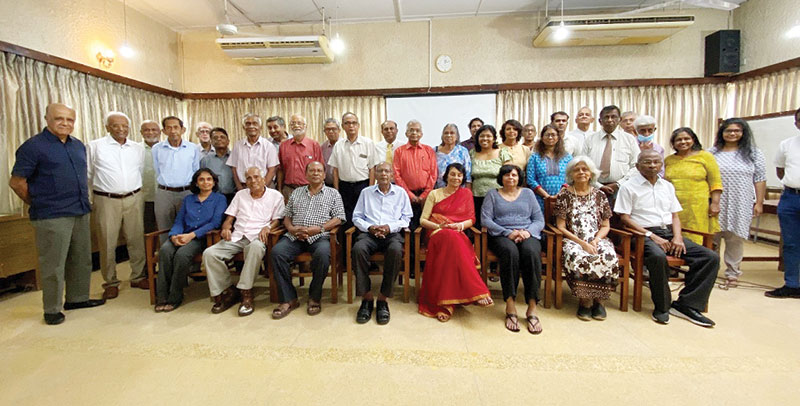
Last week I made mention of a gathering in Colombo to remember Kumar David, who passed away last October, as Comrade, Professor and Friend. The event was held on Saturday, April 5th, a day of double significance, first as the anniversary of the JVP insurrection on 5th April 1971, and now the occasion of the official welcome extended to visiting Indian Prime Narendra Modi by the still new JVP-NPP government. The venue was the Ecumenical Institute for Study and Dialogue (EISD) on Havelock Road, which has long been a forum for dialogues and discussions of topics ranging from religious ecumenism, Liberation Theology and Marxist politics. Those who gathered to remember Kumar were also drawn from many overlapping social, academic, professional and political circles that intersected Kumar’s life and work at multiple points. Temporally and collectively, the gathering spanned over six decades in the evolution of post-independence Sri Lanka – its politics, society and the economy.
Several spoke and recalled memories, and their contributions covered from what many of us have experienced as Sri Lankans from the early 1960s to the first two and a half decades of the 21st century. The task of moderating the discussion fell to Prof. Vijaya Kumar, Emeritus Professor of Chemistry at Peradeniya, who was a longtime friend of Kumar David at the university and a political comrade in the LSSP – especially in the Party’s educational and publication activities.
Vijaya Kumar recalled Kumar David’s contributions not only to Marxist politics but also to the popularization of Science that became a feature in several of KD’s weekly contributions to the Sunday Island and the Colombo Telegraph. Marshal Fernando, former and longtime Director of the EISD welcomed the participants and spoke of Kumar David’s many interactions with the Institute and his unflinching offer of support and advice to its activities. EISD’s current Director, Fr. Jayanath Panditharatne and his staff were extremely helpful.
Rohini David, Kumar’s wife of over 50 years, flew in specially for the occasion from Los Angeles and spoke glowingly of Kumar’s personal life as a husband and a father, and of his generosity for causes that he was committed to, not only political, but also, and more importantly, educational. An interesting nugget revealed by Rohini is the little known fact that Kumar David was actually baptized twice – possibly as a Roman Catholic on his father’s side, and as an Anglican on his mother’s side. Yet he grew to see an altogether different light in all of his adult life. Kumar’s father was Magistrate BGS David, and his maternal grandfather was a District Judge, James Joseph.
Kumar had an early introduction to politics as a result of his exposure to some of the political preparations for the Great Hartal of 1953. Kumar was 12 years old then, and the conduit was his step-father, Lloyd de Silva an LSSPer who was close to the Party’s frontline leaders. From a very young age, Kumar became familiar with all the leaders and intellectuals of the LSSP. Lloyd was known for his sharp wit and cutting polemics. One of my favourite lines is his characterization of Bala Tampoe as a “Lone Ranger in the Mass Movement.” Lloyd’s polemics may have rubbed on Kumar’s impressionable mind, but the more enduring effect came from Lloyd’s good collection of Marxist books that Kumar self-admittedly devoured as much as he could as a teenager and an undergraduate.
Electric Power and Politics
Early accounts of Kumar’s public persona came from Chris Ratnayake, Prof. Sivasegaram and Dr. K. Vigneswaran, all Kumar’s contemporaries at the Engineering Faculty that was then located in Colombo. From their university days in the early 1960s, until now, they have witnessed, been a part of and made their own contributions to politics and society in Sri Lanka. Chris, a former CEB and World Bank Electrical Engineer, was part of the Trotskyite LSSP nucleus in the Engineering Faculty, along with Bernard Wijedoru, Kumar David, Sivaguru Ganesan, MWW Dharmawardana, Wickramabahu Karunaratne and Chris Rodrigo. Of that group only Chris and MWW are alive now.
Chris gave an accurate outline of their political involvement as students, Kumar’s academic brilliance and his later roles as a Lecturer and Director of the CEB under the United Front Government. Chris also described Kumar’s later academic interest and professional expertise in the unbundling of power systems and opening them to the market. Even though he was a Marxist, or may be because of it, Kumar had a good understanding of the operation of the market forces in the electricity sector.
Chris also dealt at length on Sri Lanka’s divergent economic trajectories before and after 1977, and the current aftermath of the recent economic crisis. As someone who has worked with the World Bank in 81 countries and has had the experience of IMF bailout programs, Chris had both warning and advice in light of Sri Lanka’s current situation. No country, he said, has embarked on an economic growth trajectory by following standard IMF prescriptions, and he pointed out that countries like the Asian Tigers have prospered not by following the IMF programs but by charting their own pathways.
Prof. S. Sivasegaram and Dr. K. Vigneswaran graduated in 1964, one year after Kumar David, with first classes in Mechanical Engineering and Civil Engineering, respectively. Sivasegaram joined the academia like Kumar David, while Vigneswaran joined the Irrigation Department but was later drawn into the vortex of Tamil politics where he has been a voice of reason and a source for constructive alternatives. As Engineering students, they were both Federal Party supporters and were not aligned with Kumar’s left politics.
It was later at London Imperial College, Sivasegaram said, he got interested in Marxism and he credited Kumar as one of the people who introduced him to Marxism and to anti-Vietnam protests. But Kumar could not persuade Sivasegaram to be a Trotskyite. Sivasegaram has been a Maoist in politics and apart from his Engineering, he is also an accomplished poet in Tamil. Vigneswaran recalled Kumar’s political involvement as a Marxist in support of the right of self-determination of the Tamils and his accessibility to Tamil groups who were looking for support from the political left.
K. Ramathas and Lal Chandranath were students of Kumar David at Peradeniya, and both went on to become established professionals in the IT sector. Ramathas passionately recalled Kumar’s effectiveness as a teacher and described his personal debt of gratitude for helping him to get a lasting understanding of the concept and application of power system stability. This understanding has helped him deal with other systems, said Ramathas, even as he bemoaned the lack of understanding of system stability among young Engineers and their failure to properly explain and address recurrent power failures in Sri Lanka.
Left Politics without Power
The transition from Engineering to politics in the discussion was seamlessly handled by veterans of left politics, viz., Siritunga Jayasuriya, Piyal Rajakaruna and Dishan Dharmasena, and by Prof. Nirmal Dewasiri of the History Department at the University of Colombo. Siritunga, Piyal and Dishan spoke to the personal, intellectual and organizational aspects of Kumar David in the development of left politics after Kumar David, Vasudeva Nanayakkara and Bahu were no longer associated with the LSSP. Dewasiri reflected on the role of the intellectuals in left political parties and the lost to the left movement as a whole arising from the resignation or expulsion of intellectuals from left political organizations.
While Kumar David’s academic and professional pre-occupation was electric power, pursuing power for the sake of power was not the essence of his politics. That has been the case with Bahu and Sivasegaram as well. They naturally had a teaching or educational role in politics, but they shared another dimension that is universally common to Left politics. Leszek Kolakowski, the Polish Marxist who later became the most celebrated Marxist renegade, has opined that insofar as leftists are generally ahead of their times in advocating fundamental social change and promoting ideas that do not resonate with much of the population, they are unlikely to win power through electoral means.
Yet opposition politics predicated on exposing and decrying everything that is wrong with the system and projecting to change the system is fundamentally the most moral position that one can take in politics. So much so it is worth pursuing even without the prospect of power, as Hector Abhayavardhana wrote in his obituaries for LSSP leaders like NM Perera and Colvin R de Silva. By that token, the coalition politics of the 1960s could be seen as privileging a shared parliamentary path to power while dismissing as doctrinaire the insistence on a sole revolutionary path to power.
The two perspectives clashed head on and splintered the LSSP at its historic 1964 Conference. Kumar David and Lal Wijenayake were the youngest members at that conference, and the political genesis of Kumar David and others at the Engineering faculty that Chris Ratnayake outlined was essentially post-coalition politics. In later years, Vasudeva Nanayakkara, Bahu and Kumar David set about creating a left-opposition (Vama) tendency within the LSSP.
This was considered a superior alternative to breaking away from the Party that had been the experience of 1964. Kumar David may have instinctively appreciated the primacy of the overall system stability even if individual components were getting to be unstable! But their internal efforts were stalled, and they were systematically expelled from the Party one by one. Kumar David recounted these developments in the obituary he wrote for Bahu.
As I wrote last week, after 1977 and with the presidential system in place, the hitherto left political parties and organizations generally allied themselves with one or the other of the three main political alliances led by the SLFP, the SLPP and even the UNP. A cluster of them gravitated to the NPP that has been set up by the JVP under the leadership of Anura Kumara Dissanayake. Kumar David supported the new JVP/NPP initiative and was optimistic about its prospects. He wrote positively about them in his weekly columns in the Sunday Island and the Colombo Telegraph.
The Social Circles of Politics
Sometime in late 2006, Rohan Edrisinha introduced Kumar and me to Rajpal Abeynayake, who was then the Editor of the Sunday Observer, for the purpose of writing weekly columns for the Paper. Bahu was already writing for the Sunday Observer and for almost an year, Bahu, Kumar and I were Sunday Island columnists, courtesy of Rajpal Abeynayake. In 2007, Prof. Vijaya Kumar introduced us to Manik de Silva, already the doyen of Sri Lanka’s English medium editors, and Kumar and I started writing for the Sunday Island edited by Manik. It has been non-stop weekly writing a full 18 years. For a number of years, we have also been publishing modified versions of our articles in the Colombo Telegraph, the online journal edited by the inimitable Uvindu Kurukulasuriya.
Writing mainstream rekindled old friendships and created new ones. It was gratifying to see many of them show up at the celebration of life for Kumar. That included Rajpal Abeynayake, Bunchy Rahuman, Gamini Kulatunga, Ranjith Galappatti, Tissa Jayatilaka, NG (Tanky) Wickremeratne, and Manik de Silva. Vijaya Chandrasoma, who unfortunately could not attend the meeting, was particularly supportive of the event along with Tanky and Ramathas. Tissa and Manik spoke at the event and shared their memories of Kumar.
Dr. Santhushya Fernando of the Colombo Medical Faculty provided organizational support and created two superb video montages of Kumar’s life in pictures to background theme songs by Nat King Cole and Frank Sinatra. Manoj Rathnayake produced a Video Recording of the event.
In a quirky coincidence, five of those who attended the event, viz. Manik de Silva, Vijaya Kumar, Chris Ratnayake, S. Sivasegaram and K. Vigneswaran were all classmates at Royal College. On a personal note, I have been associated with every one of them in one way or another. Chris and I were also Engineers at the Hantana Housing Development in the early 1980s, for which the late Suren Wickremesinghe and his wife Tanya were the Architects. And Suren was in the same Royal College class as the other five mentioned here.
In the last article he wrote before his passing, Kumar David congratulated Anura Kumara Dissanayake for his magnificent political achievement and expressed cautious optimism for the prospects under an NPP government. Many in the new government followed Kumar David’s articles and opinions and were keen to participate in the celebration of life that was organized for him. That was not going to be possible anyway with the visit of Prime Minister Modi falling on the same day. Even so, Prof. Sunil Servi, Minister of Buddha Sasana, and Religious and Cultural Affairs, was graciously present at the event and expressed his appreciation of Kumar David’s contributions to Sri Lankan politics and society.
by Rajan Philips
Features
53 Years of HARTI- Looking Back and Looking Ahead
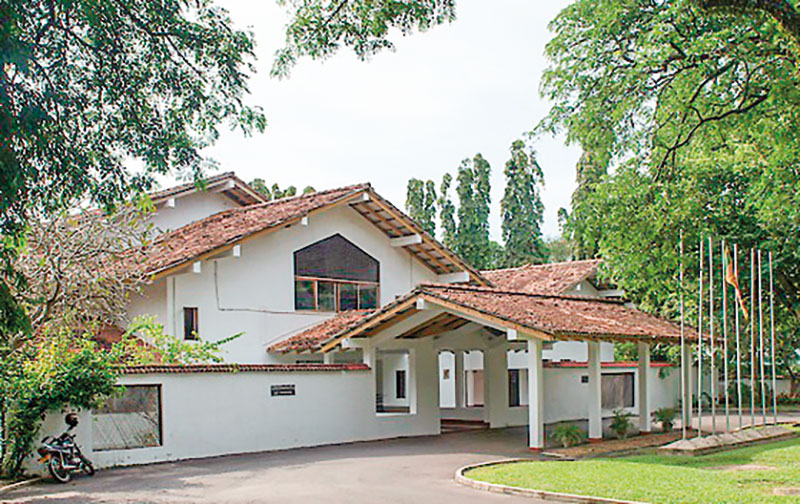
C. Narayanasuwami, the first Director of the then Agrarian Research and Training Institute (ARTI).
I am delighted to be associated with the fifty third anniversary celebrations of HARTI. I cherish pleasant memories of the relentless efforts made as the First Director to establish, incorporate, develop, direct, and manage a nascent institute in the 1970s amidst many challenges. The seven-year period as Director remains as the most formidable and rewarding period in my career as a development professional. I have been fortunate to have had a continuing relationship with HARTI over the last five decades. It is rarely that one who played a significant role in the establishment and growth of an institution gets an opportunity to maintain the links throughout his lifetime and provide messages on the completion of its fifth (I was still the director then), the 15th, 50th and 53rd anniversaries.
I had occasion also to acknowledge the contribution of the Institute on its 46th year when I released my book, ‘Managing Development: People, Policies and Institutions’ using HARTI auditorium and facilities, with the able support of the then director and staff who made the event memorable. The book contains a special chapter on HARTI.
On HARTI’s 15th anniversary I was called upon to offer some thoughts on the Institute’s future operations. The following were some of my observations then, “ARTI has graduated from its stage of infancy to adolescence….Looking back it gives me great satisfaction to observe the vast strides it has made in developing itself into a dynamic multidisciplinary research institution with a complement of qualified and trained staff. The significant progress achieved in new areas such as marketing and food policy, data processing, statistical consultancies, information dissemination and irrigation management, highlights the relevance and validity of the scope and objectives originally conceived and implemented”.
It may be prudent to review whether the recommendations contained in that message, specifically (a) the preparation of a catalogue of research findings accepted for implementation partially or fully during policy formulation, (b) the relevance and usefulness of information services and market research activities in enhancing farmer income, and (c) the extent to which the concept of interdisciplinary research- a judicious blend of socio-economic and technical research considered vital for problem-oriented studies- was applied to seek solutions to problems in the agricultural sector.
The thoughts expressed on the 15th anniversary also encompassed some significant management concerns, specifically, the need to study the institutional capabilities of implementing agencies, including the ‘human factor’ that influenced development, and a critical review of leadership patterns, management styles, motivational aspects, and behavioural and attitudinal factors that were considered vital to improve performance of agrarian enterprises.
A review of HARTI’s current operational processes confirm that farmer-based and policy-based studies are given greater attention, as for example, providing market information service for the benefit of producers, and undertaking credit, microfinance, and marketing studies to support policy changes.
The changes introduced over the years which modified the original discipline-based research units into more functional divisions such as agricultural policy and project evaluation division, environmental and water resources management division, and agricultural resource management division, clearly signified the growing importance attached to functional, action-oriented research in preference to the originally conceived narrowly focused discipline-based research activities.
HARTI has firmly established its place as a centre of excellence in socio-economic research and training with a mature staff base. It is pertinent at this juncture to determine whether the progress of HARTI’s operations was consistently and uniformly assessed as successful over the last five decades.
Anecdotal evidence and transient observations suggest that there were ups and downs in performance standards over the last couple of decades due to a variety of factors, not excluding political and administrative interventions, that downplayed the significance of socio-economic research. The success of HARTI’s operations, including the impact of policy-based studies, should be judged on the basis of improved legislation to establish a more structured socio-economic policy framework for agrarian development.
Looking Ahead
Fifty-three years in the life of an institution is substantial and significant enough to review, reflect and evaluate successes and shortcomings. Agrarian landscapes have changed over the last few decades and national and global trends in agriculture have seen radical transformation. Under these circumstances, such a review and reflection would provide the basis for improving organisational structures for agricultural institutions such as the Paddy Marketing Board, development of well-conceived food security plans, and above all, carefully orchestrated interventions to improve farmer income.
New opportunities have arisen consequent to the recent changes in the political horizon which further validates the role of HARTI. HARTI was born at a time when Land Reform and Agricultural Productivity were given pride of place in the development programs of the then government. The Paddy Lands Act provided for the emancipation of the farming community but recent events have proven that the implementation of the Paddy Lands Act has to be re-looked at in the context of agricultural marketing, agricultural productivity and income generation for the farming community.
Farmers have been at the mercy of millers and the price of paddy has been manipulated by an oligopoly of millers. This needs change and greater flexibility must be exercised to fix a guaranteed scale of prices that adjust to varying market situations, and provide adequate storage and milling facilities to ensure that there is no price manipulation. It is time that the Paddy Lands Act is amended to provide for greater flexibility in the provision of milling, storage and marketing services.
The need for restructuring small and medium scale enterprises (SMEs) recently announced by the government warrants greater inputs from HARTI to study the structure, institutional impediments and managerial constraints that inflict heavy damages leading to losses in profitability and organisational efficiency of SMEs.
Similarly, HARTI should look at the operational efficiency of the cooperative societies and assess the inputs required to make them more viable agrarian institutions at the rural level. A compact research exercise could unearth inefficiencies that require remedial intervention.
With heightened priority accorded to poverty alleviation and rural development by the current government, HARTI should be in the forefront to initiate case studies on a country wide platform, perhaps selecting areas on a zonal basis, to determine applicable modes of intervention that would help alleviate poverty.
The objective should be to work with implementing line agencies to identify structural and institutional weaknesses that hamper implementation of poverty reduction and rural development policies and programs.
The role played in disseminating marketing information has had considerable success in keeping the farming community informed of pricing structures. This should be further expanded to identify simple agricultural marketing practices that contribute to better pricing and income distribution.
HARTI should consider setting up a small management unit to provide inputs for management of small-scale agrarian enterprises, including the setting up of monitoring and evaluation programs, to regularly monitor and evaluate implementation performance and provide advisory support.
Research and training must get high level endorsement
to ensure that agrarian policies and programs constitute integral components of the agricultural development framework. This would necessitate a role for HARTI in central planning bodies to propose, consider and align research priorities in line with critical agricultural needs.
There is a felt need to establish links with universities and co-opt university staff to play a role in HARTI research and training activities-this was done during the initial seven-year period. These linkages would help HARTI to undertake evaluative studies jointly to assess impacts of agrarian/agricultural projects and disseminate lessons learned for improving the planning and execution of future projects in the different sectors.
In the overall analysis, the usefulness of HARTI remains in articulating that research and analysis are crucial to the success of implementation of agrarian policies and programs.
In conclusion, let us congratulate the architects and the dynamic management teams and staff that supported the remarkable growth of HARTI which today looks forward to injecting greater dynamism to build a robust institution that would gear itself to meeting the challenges of a new era of diversified and self-reliant agrarian society. As the first director of the Institute, it is my wish that it should grow from strength to strength to maintain its objectivity and produce evidence-based studies that would help toward better policies and implementation structures for rural transformation.
Features
Keynote Speech at the Launch of The Ceylon Journal, by Rohan Pethiyagoda
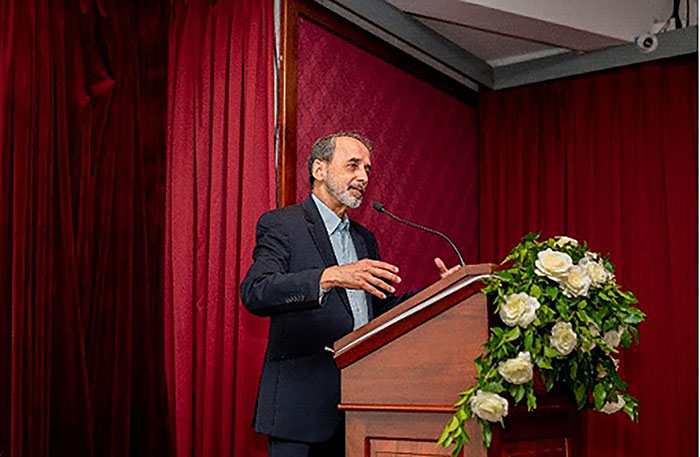
“How Rubber Shaped our Political Philosophy”
The Ceylon Journal was launched last August. Its first issue is already out of print. Only a handful of the second issue covering new perspectives of history, art, law, politics, folklore, and many other facets of Sri Lanka is available. To reserve your very own copy priced Rs. 2000 call on 0725830728.
Congratulations, Avishka [Senewiratne]. I am so proud of what you have done. Especially, Ladies and Gentlemen, to see and hear all of us stand up and actually sing the National Anthem was such a pleasure. Too often on occasions like this, the anthem is played, and no one sings. And we sang so beautifully this evening that it brought tears to my eyes. It is not often we get to think patriotic thoughts in Sri Lanka nowadays: this evening was a refreshing exception.
I’m never very sure what to say on an occasion like this, in which we celebrate history, especially given that I am a scientist and not a historian. It poses something of a challenge for me. Although we are often told that we must study history because it repeats itself, I don’t believe it ever does. But history certainly informs us: articles such as those in The Ceylon Journal, of which I read an advance copy, help us understand the context of our past and how it explains our present.
I want to take an example and explain what I am on about. I’m going to talk about rubber. Yes rubber, as in ‘eraser’, and how it crafted our national political identity, helping, even now seven decades later, to make ‘capitalism’ a pejorative.
As I think you know already, rubber came into general use in the middle of the 19th century. Charles Macintosh invented the raincoat in 1824 by placing a thin sheet of rubber between two sheets of fabric and pressing them together. That invention transformed many things, not least warfare. Just think of Napoleon’s invasion of Russia in the winter of 1812. His troops did that without any kind of waterproof clothing. Some 200,000 of them perished, not from bullets but from hypothermia. Waterproof raincoats could have saved thousands of lives. Not long after rubber came to be used for waterproofing, we saw the first undersea telegraph cable connecting Europe to North America being laid in the 1850s. When the American civil war broke out in 1860, demand for rubber increased yet further: the troops needed raincoats and other items made from this miracle material.
At that time rubber, used to be collected from the wild in the province of Pará in Northern Brazil, across which the Amazon drains into the Atlantic. In 1866, steamers began plying thousands of kilometres upriver, to return with cargoes of rubber harvested from the rainforest. Soon, the wild trees were being tapped to exhaustion and the sustainability of supply became doubtful.
Meanwhile, England was at the zenith of its colonial power, and colonial strategists thought rather like corporate strategists do today. The director of the Kew Gardens at the time, Joseph Hooker, felt there might be one day be a greater potential for rubber. He decided to look into the possibility of cultivating the rubber tree, Hevea brasiliensis, in Britain’s Asian colonies. So, he dispatched a young man called Henry Wickham to the Amazon to try to secure some seeds. In 1876, Wickham returned to Kew with 70,000 rubber seeds. These were planted out in hothouses in Kew and by the end of that year, almost 2000 of them had germinated.
These were dispatched to Ceylon, only a few weeks’ voyage away now, thanks to steamships and the Suez Canal. The director of the Peradeniya Botanic Garden at the time was George Henry Kendrick Thwaites, a brilliant systematic botanist and horticulturalist. Thwaites received the seedlings and had to decide where to plant them. He read the available literature—remember, this was 1876: there was no internet—and managed to piece together a model of the climatic conditions in the region of the Amazonian rainforest to which rubber was native. He decided that the plants would need an elevation of less than 300 metres and a minimum annual rainfall of at least 2000mm. In other words, the most suitable region for rubber would be an arc about 30 kilometres wide, extending roughly from Ambalangoda to Matale. Despite his never having seen a rubber plant until then, astonishingly, he got it exactly right.
Thwaites settled on a site in the middle of the arc, at Henarathgoda near Gampaha. That became the world’s first rubber nursery: the first successful cultivation of this tree outside Brazil. The trees grew well and, eight years later, came into seed. Henry Trimen, Thwaites’ successor, used the seeds to establish an experimental plantation near Polgahawela and also shared seeds with the Singapore Botanic Garden. Those would later become the foundation of the great Malaysian rubber industry.
But up to that time, Sri Lanka’s rubber plantation remained a solution looking for a problem. Then, in 1888, the problem arrived, and from a completely unexpected quarter: John Dunlop invented the pneumatic tire. Soon, bicycles came to be fitted with air-filled tires, followed by motorcars. In 1900, the US produced just 5,000 motorcars; by 1915, production had risen to half a million. The great rubber boom had begun.
Meanwhile, the colonial administration in Ceylon had invited investors to buy land and start cultivating rubber to feed the growing international demand. But by the early 1890s, three unusual things had happened. First, with the collapse of the coffee industry in the mid-1870s, many British investors had been bankrupted. Those who survived had to divert all their available capital into transitioning their failing coffee plantations into tea. They were understandably averse to risk. As a result, the British showed little interest in this strange tree called rubber that had been bought from Brazil.
Second, a native Sri Lankan middle class had by then emerged. The Colebrooke-Cameron reforms had led to the establishment of the Royal academy, later Royal College, by 1835. Other great schools followed in quick succession. From the middle of the 19th century, it was possible for Sri Lankans to get an education and get employment in government service, become professionals, doctors, lawyers, engineers, civil servants, clerks, and so on. And so, by the 1890s, a solid native middle class had emerged. The feature that defines a middle class, of course, is savings, and these savings now came to be translated into the capital that founded the rubber industry.
Third, the British had by then established a rail and road network and created the legal and commercial institutions for managing credit and doing business—institutions like banks, financial services, contract law and laws that regulated bankruptcy. They had made the rules, but by now, Sri Lankans had learned to play the game. And so, it came to be that Sri Lankans came to own a substantial part of the rubber-plantation industry very early in the game. By 1911, almost 200,000 acres of rubber had been planted and world demand was growing exponentially.
In just one generation, investors in rubber were reaping eye-watering returns that in today’s money would equate to Rs 3.6 million per acre per year. It was these people who, together with the coconut barons, came to own the grand mansions that adorn the poshest roads in Cinnamon Gardens: Ward Place, Rosmead Place, Barnes Place, Horton Place, and so on. There was an astonishingly rapid creation of indigenous wealth. By 1911, the tonnage at shipping calling in Sri Lankan ports—Colombo and Trincomalee—exceeded nine million tons, making them collectively the third busiest in the British Empire and the seventh busiest in the world. By comparison, the busiest port in Europe is now Rotterdam, which ranks tenth in the world.
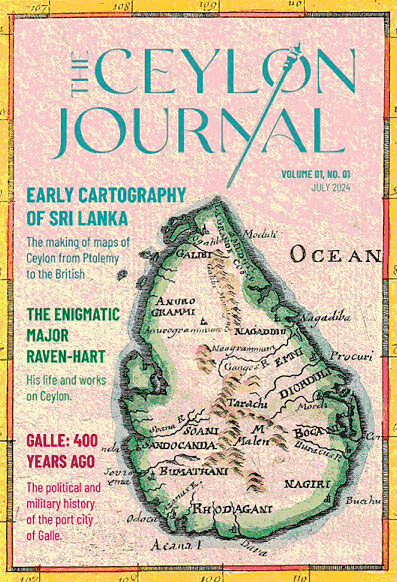 We often blame politicians for things that go wrong in our country and God knows they are responsible for most of it. But unfortunately for us, the first six years of independence, from 1948 to 1954, were really unlucky years for Sri Lanka. As if successive failed monsoons and falling rice crops weren’t bad enough, along came the Korean war. In the meantime, the Sri Lankan people had got used to the idea of food rations during the war and they wanted rations to be continued as free handouts. Those demands climaxed in the ‘Hartal’ of 1953, a general strike demanding something for nothing. Politicians were being forced to keep the promises they had made when before independence, that they would deliver greater prosperity than under the British.
We often blame politicians for things that go wrong in our country and God knows they are responsible for most of it. But unfortunately for us, the first six years of independence, from 1948 to 1954, were really unlucky years for Sri Lanka. As if successive failed monsoons and falling rice crops weren’t bad enough, along came the Korean war. In the meantime, the Sri Lankan people had got used to the idea of food rations during the war and they wanted rations to be continued as free handouts. Those demands climaxed in the ‘Hartal’ of 1953, a general strike demanding something for nothing. Politicians were being forced to keep the promises they had made when before independence, that they would deliver greater prosperity than under the British.
So, by 1949, D. S. Senanayake was forced to devalue the rupee, leading to rapid price inflation. Thankfully we didn’t have significant foreign debt then, or we might have had to declare insolvency much earlier than we finally did, in 2022. And then, because of failing paddy harvests, we were forced to buy rice
from China, which was in turn buying our rubber. But as luck would have it, China entered the Korean war, causing the UN, at the behest of the US, to embargo rubber exports to China.
This placed the D. S. Senanayake and John Kotelawala governments in an impossible predicament. There was a rice shortage; people were demanding free rice, and without rubber exports, there was no foreign exchange with which to buy rice. Kotelawala flew to Washington, D.C., to meet with President Eisenhower and plead for either an exemption from the embargo or else, for the US to buy our rubber. Despite Sri Lanka having provided rubber to the Allies at concessionary prices during the war and having supported the Allies, Eisenhower refused. British and American memories were short indeed. In India, Mahatma Gandhi and the Congress Party had chosen the moment, in August 1942 when Japan invaded Southeast Asia and were poised to invade Bengal, to demand that the British quit India, threatening in the alternative that they would throw their lot in with the Japanese. The Sri Lankan government, by contrast, had stood solidly by the Allies. But now, those same allies stabbed the fledgling nation in the chest. Gratitude, it seemed, was a concept alien to the West.
In these circumstances, Sri Lanka had no choice but to break the UN embargo and enter into a rice-for-rubber barter agreement with China. This resulted not only in the US suspending aid and the supply of agricultural chemicals to Sri Lanka, but also invoking the Battle Act and placing restrictions on US and UK ships calling at the island’s ports.
Understandably, by 1948, Sri Lankans entertained a strong disdain for colonialism. With the Cold War now under way, the USSR and China did all they could to split countries like Sri Lana away not just from their erstwhile colonial masters but also the capitalist system. If any doubt persisted in the minds of Sri Lankan politicians, Western sanctions put an end to that. The country fell into the warm embrace of the communist powers. China and the USSR were quick to fill the void left by the West, and especially in the 1950s, there was good reason to believe that the communist system was working. The Soviet economy was seeing unprecedented growth, and that decade saw them producing hydrogen bombs and putting the first satellite, dog and man in space.
As a consequence of the West’s perfidy in the early 1950s, ‘Capitalism’ continues to have pejorative connotations in Sri Lanka to this day. And it resulted in us becoming more insular, more inward looking, and anxious to assert our nationalism even when it cost us dearly.
Soon, we abolished the use of English, and we nationalized Western oil companies and the plantations. None of these things did us the slightest bit of good. We even changed the name of the country in English from Ceylon to Sri Lanka. Most countries in the world have an international name in addition to the name they call themselves. Sri Lanka had been ‘Lanka’ in Sinhala throughout the colonial period, even as its name had been Ceylon in English. The Japanese don’t call themselves Japan in their own language, neither do the Germans call themselves Germany. These are international names for Nihon and Deutschland, just like Baharat or Hindustan is what Indians call India. But we insisted that little Sri Lanka will assert itself and insist what the world would call us, the classic symptom of a massive inferiority complex. While countries like Singapore built on the brand value of their colonial names, we erased ours from the books. Now, no one knows where Ceylon tea or Ceylon cinnamon comes from.
Singapore is itself a British name: it should be Sinha Pura, the Lion City, a Sanskrit name. But Singapore values its bottom line more than its commitment to terminological exactitude. Even the name of its first British governor, Sir Stamford Raffles, has become a valued national brand. But here in Sri Lanka, rather than build on our colonial heritage, not the least liberal values the British engendered in us, together with democracy and a moderately regulated economy, we have chosen to deny it and seek to expunge it from our memory. We rejected the good values of the West along with the bad: like courtesy, queuing, and the idea that corruption is wrong.
We have stopped fighting for the dignity of our land, and I hope that as you read the articles in The Ceylon Journal that are published in the future, we will be reminded time and time again of the beautiful heritage of our country and how we can once again find it in ourselves to be proud of this wonderful land.
-
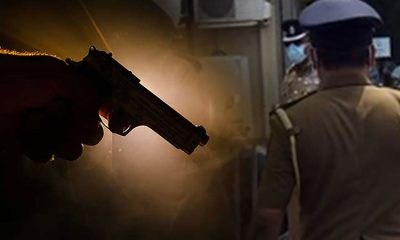
 News5 days ago
News5 days agoSuspect injured in police shooting hospitalised
-
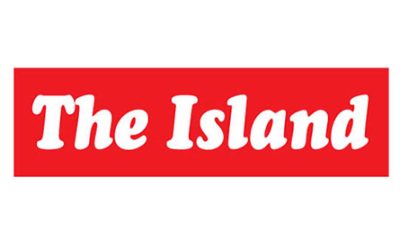
 Features6 days ago
Features6 days agoRobbers and Wreckers
-
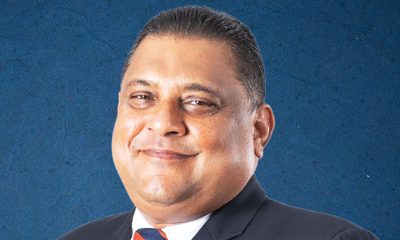
 Business6 days ago
Business6 days agoBhathiya Bulumulla – The Man I Knew
-
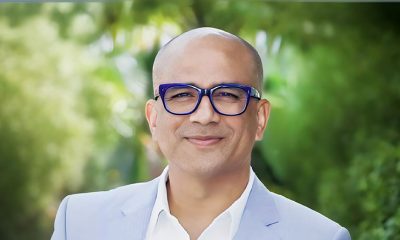
 Business5 days ago
Business5 days agoSanjiv Hulugalle appointed CEO and General Manager of Cinnamon Life at City of Dreams Sri Lanka
-
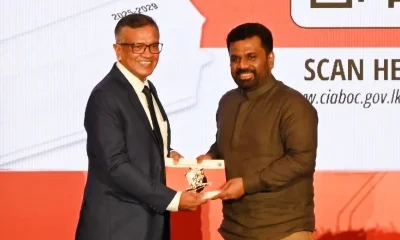
 Business7 days ago
Business7 days agoNational Anti-Corruption Action Plan launched with focus on economic recovery
-

 Features4 days ago
Features4 days agoLiberation Day tariffs chaos could cause permanent damage to US economy, amid global tensions
-
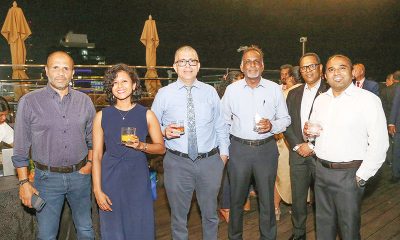
 Business4 days ago
Business4 days agoMembers’ Night of the Sri Lanka – Russia Business Council of The Ceylon Chamber of Commerce
-
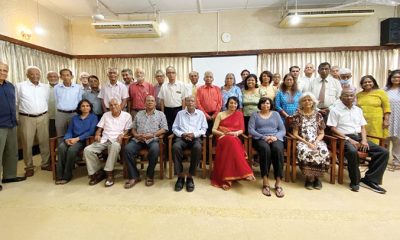
 Features4 days ago
Features4 days agoMinds and Memories picturing 65 years of Sri Lankan Politics and Society

